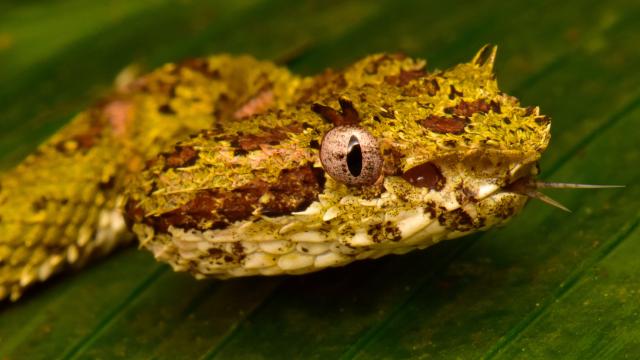Trond Larsen was night-searching for rare frogs and insects in the Lost City recently discovered within Honduras’ Mosquitia Rainforest when his headlamp illuminated something surprising: a curious black puma. Larsen, a researcher who led this February 2017 expedition into the so-called Lost City of the Monkey God, walked away from the encounter unscathed, but that puma was but a bite of the magnificence Larsen and his team would find.
This remote region is teeming with life—some of which was believed extinct. Conservation International’s Rapid Assessment Program, of which Larsen is director, led a team of scientists into the lowland rainforest where the Lost City is located from February 14 to 25.
Also called La Ciudad Blanca or the White City, the Lost City may date back to A.D. 1400, and was built by a mysterious civilisation archaeologists still don’t have a name for. It had been a mythical wonder for years until an expedition confirmed its existence in 2015.
Larsen told Gizmodo that the area is, “so special archaeologically and culturally” that his team began to wonder what other secrets it might be hiding. “Are there comparable biological treasures in the area?” Larsen said. “That could, of course, provide further reasoning for increased protection and management across the broader landscape.”
Turns out, there are! Larsen and other scientists travelled to the Ciudad de Jaguar, or City of the Jaguar, one of the ancient settlements within the Lost City. They conducted surveys within 3km of their base camp where they spotted three species that were previously thought extinct, including the pale-faced bat, a brown-furred little guy that features an upright snout. The team may have even discovered a new species of molly, a poeciliid fish that gives birth to live offspring.
The researchers also observed 22 species that had never before been seen in Honduras. The endangered Great Green Macaw, whose striking green feathers may help it blend it among the trees, was one of them.
A group of white-lipped peccaries, which look like black hogs, was roaming the area despite their population being reduced to just 13 per cent of its historic range today. The presence of such animals also provides ample prey for predators like jaguars and pumas.
This region of the world is dealing with a load of threats, from poaching to illegal cattle ranching. It seems the Ciudad de Jaguar’s biodiversity has remained unscathed so far, likely protected by its rugged and steep terrain. (To get into the site, the team had to fly in and out by helicopter; the weather always factored into their travel plans as the fog could blind the chopper, too.) However, those threats are slowly encroaching, said Larsen. That’s why it’s important this region receive the proper protections.
The city sits within the Río Plátano Biosphere Reserve, the country’s largest protected area, so land use is supposed to be managed. The sad reality, however, is that people aren’t deterred by arbitrary borders that dictate which trees they can or cannot cut. Getting even more protections for the site might first require even more research, though.
Luckily for the Lost City, the Kaha Kamasa Foundation was founded last year with the hopes of continuing research, protection, and management of the area.
International conservation groups and the Honduran government are leading this effort because, well, it’s not every day biologists find a new region so rich in wildlife. Especially these days.
